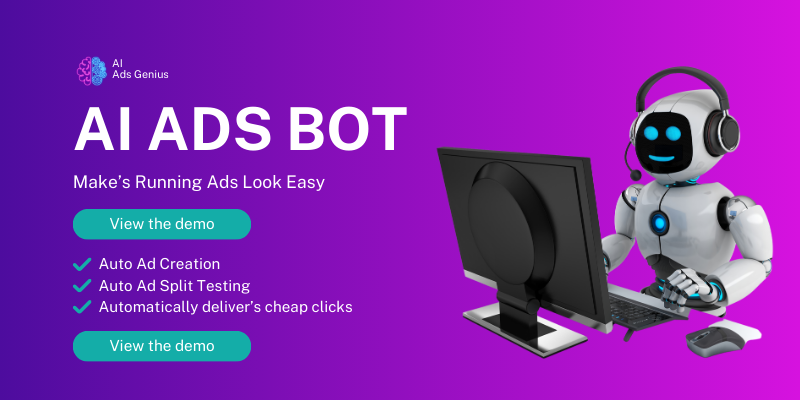Understanding Google Ads Basics
What Are Google Ads?
So, you’ve probably heard of Google Ads but aren’t really sure what they are. Google Ads is essentially a platform where advertisers can create ads and showcase them to users searching for related products or services on Google. It’s a way to get in front of potential customers at the exact moment they’re looking for what you offer.
The beauty of Google Ads is that it operates on a pay-per-click (PPC) model. That means you only pay when someone clicks on your ad. So, if someone sees your ad but doesn’t click, it’s free! How cool is that?
In my experience, diving into Google Ads can feel a bit overwhelming at first, but once you understand the basics, it’s a powerful tool to grow your business. Trust me, getting to know this platform can really turn things around for you!
Setting Up Your Google Ads Account
Creating Your Account
First things first, you need to create an account on Google Ads. Head over to the Google Ads website, click on “Start Now,” and follow the prompts. You’ll need a Google account, so if you don’t have one, grab it while you’re there.
After you’ve entered your details, Google will ask about your advertising goals. Are you trying to get more website clicks, calls, or app downloads? Your choice here will affect the setup process, so think about what outcome you want to achieve.
Once everything is set up, start familiarizing yourself with the interface. Google Ads can seem a bit complex, but the more you play around, the better you’ll understand it. And hey, it’s totally okay to make mistakes along the way!
Choosing Your Campaign Objectives
Defining Your Goals
Setting clear objectives is crucial before you jump into creating ads. Think about what you want to accomplish. Are you trying to drive traffic to your site or generate leads? Maybe you’re interested in promoting sales or increasing brand awareness. Each goal will require a different approach.
In my experience, having a solid campaign objective in mind helps shape your ad messaging and targeting. For example, if you’re focused on sales, your ads should emphasize offers or promotions. If it’s lead generation, clear calls to action are key.
Don’t be afraid to refine your goals as you go. Marketing is all about testing and optimizing! So, feel free to adjust your objectives as you learn what works and what doesn’t.
Targeting Your Audience
Understanding Audience Segmentation
One of the coolest features of Google Ads is its targeting options. You can reach specific groups of people based on demographics, interests, and behaviors. Start by thinking about who your ideal customer is and what they like.
Create audience segments that make sense for your business. For instance, if you’re selling running shoes, you might want to target fitness enthusiasts or people who are interested in health and wellness.
(Here’s a tip!) Make use of Google’s audience insights tools. These can help you refine your targeting and find interesting user behaviors you might not have considered. It’s like having a backstage pass to your audience’s interests!
Creating Compelling Ads
Writing Engaging Ad Copy
Now that you have your audience and goals set, it’s time to craft your ads! I always recommend focusing on clear and engaging ad copy that resonates with your targeted audience. Think about the benefits users will get from your product or service.
Use strong action words and include a call to action—like “Shop Now” or “Sign Up Today.” It’s all about inviting users to take that next step! Remember, your headline should catch attention; that’s your first impression!
And don’t forget to A/B test your ads. Create multiple versions of your copy and see which one performs best. It’s all part of fine-tuning your strategy to fit what resonates most with your audience.
Monitoring and Optimizing Your Campaign
Setting Up Tracking
Once your ads are live, the work isn’t over. You’ll want to keep an eye on how they’re performing. Setting up conversion tracking is essential. It helps you see not just clicks but what happens after the click—whether that’s a purchase, signup, or any other goal you set.
I recommend diving into your Google Ads dashboard at least once a week. Look at the metrics that matter to you: impressions, clicks, and conversions. If something isn’t performing well, don’t be afraid to tweak it.
The key to a successful ad campaign is constant optimization. Adjust your ad copy, try different targeting options, and refine your budget. The more data you gather, the better your ads will perform in the long run!
Frequently Asked Questions
What is the minimum budget for running a Google Ad campaign?
The minimum budget can vary, but you can start with as little as $5 a day. It’s all about scaling up as you see what works for you.
How long does it take for a Google Ads campaign to start showing results?
You might see results almost immediately, especially if you’re bidding in a competitive market, but typically, it takes a few weeks to gather enough data for optimization.
Can I pause my ads at any time?
Absolutely! You can pause or modify your campaigns at any time if you feel it’s not performing as expected. Flexibility is one of the strengths of digital advertising.
What are Quality Scores, and why do they matter?
Quality Scores are metrics used by Google to measure how relevant your ads, keywords, and landing pages are. A higher score can lead to lower costs per click and better ad placements, so it’s worth keeping an eye on!
Is running Google Ads complicated?
It can seem complicated at first, but the more you use it, the easier it gets. There are plenty of resources and guides to help you along the way!

